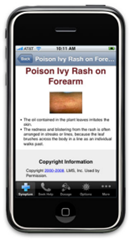News 3/10/09
A pediatric nurse practitioner provides first-hand details about her practice’s selection and implementation of Epic Ambulatory.
NextGen Healthcare Information Systems announces that the national physician group practice MEDNAX, Inc. is expanding its use of NextGen’s products to include the Enterprise Practice Management solution. Pediatrix Medical Group, now a part of MEDNAX, has been utilizing the NextGen EHR for its office-based practices since 2001.
Physicians at Carilion Clinic (VA) utilize their EMR to develop a disease registry for asthma patients, estimating that it will reduce costs 10% and will help monitor medication compliance, ED visits, and vaccinations.
An Archives of Internal Medicine article says that physicians ignore 90% of the warnings generated by e-prescribing systems. "The systems and the computers that are supposed to make [physicians’] lives better are actually torturing them," the article’s co-author said, adding that a third of the alerts were scientifically unsound or not clinically useful.
CPU Medical Management Systems partners with Gateway EDI to expand its electronic claim processing capabilities. CPU serves over 10,000 physicians.
EMR-generated colonoscopy reminders work better when sent directly to patients instead of reminding their doctor, a new study finds.

A new doctor-run wiki is up and running. The Medpedia Project is a free online medical information platform, written and maintained by health experts and founded by the Harvard, Stanford and University of Michigan schools of medicine, along with the Berkeley School of Public Health. The tool is available to consumers as well as physicians.
Family Health Care Clinic (MS) becomes one of the country’s first health facilities to receive a chunk of taxpayers’ money since the passage of the economic stimulus bill. The $1.3 million government grant that will be used to open three clinics in an under-served area of rural Mississippi, creating an estimated 70 jobs including 30 full-time positions. In the mean time, Portneuf Medical Center (ID) has applied for nearly $4 million to continue work on the Telemedicine Network, which really sounds like an HIE and not telemedicine.
Nearly 300 student members of the AMA participate in a Lobby Day at Capitol Hill to urge Congress to protect patient access to care, ask for medical school debt relief, and to stop Medicare payment cuts.
An Arkansas doctor who had been sanctioned by the state medical board is arrested after over 100 fully automatic weapons, a canister of grenades, and two grenade launchers were found on his property. Authorities say the arrest is not tied to the investigation of last month’s car bombing that wounded the chairman of the state’s medical board.

Worcester Polytechnic Institute launches a three-year study of four different HIT systems in various stages in installation. Two of the organizations are in the US, one is in Canada, and the other in Israel. Using a $750,000 grant, the study will investigate how implementing HIT systems in primary care impacts providers, their patients, and the operations of the healthcare delivery systems. Findings will be used to develop new insights and best practices for future HIT implementations.
The 100+ physician Virtua Medical Group (NJ) selects GE Centricity Business Advantage for revenue cycle management.
An LA Times columnist says America’s Health Insurance Plans, which claims to now support universal healthcare, is really just asking for the same old stuff: to have the government pay for treating the sickest patients, to cut pay deeply to doctors and hospitals, and to be able to offer cheap, low-benefit policies without having its premiums regulated. "The industry talks a good game about marching for reform side by side with all healthcare stakeholders — patients, drug manufacturers, doctors and hospitals. Ignagni says her members will ‘come to the table with real proposals and solutions’ rather than ‘the old-fashioned playbook of ads and 30,000-feet campaigns.’ Veterans of earlier healthcare battles justly wonder if the industry is merely trying to get in front of the parade, the better to lead it into a dead end. "
Many groups and individuals have been calling for CCHIT to evaluate more than interoperability, having it rate functionality and usability in addition to what it does now (sometimes straying far off the interoperability track and getting into those areas anyway). Should the government be in the business of rating and comparing commercial products at more than a pass-fail level of granularity? And if so, should CCHIT (and its previous HIMSS connections) be the one doing it?
Would an EMR have helped here? The Iowa Board of Medicine cites a physician for failing to maintain "timely, accurate, and complete" medical records. She agrees to pay a $1,000 fine and stop practicing medicine while she attempts to get her records current.
An EMR would probably have impacted the outcome of this case. A Kansas cardiologist and his practice agree to pay $1.3 million to settle Medicare fraud claims. The Justice Department contends the physician submitted claims for services not rendered or without proper documentation. The attorney claims the issue was all Medicare’s interpretation of the documentation rules, which required that certain portions of the records to be in the doctor’s own hand, rather than dictated by the doctor or written by a nurse. Which, frankly makes no sense at all because many, many doctors use scribes and/or dictate the whole chart. This happens to be the doctor’s second Medicare settlement. The first was for $1.5 million in 2000 after the doctor was charged with over-billing Medicare.









The article about Pediatric Associates in CA has a nugget with a potentially outsized impact: the implication that VFC vaccines…